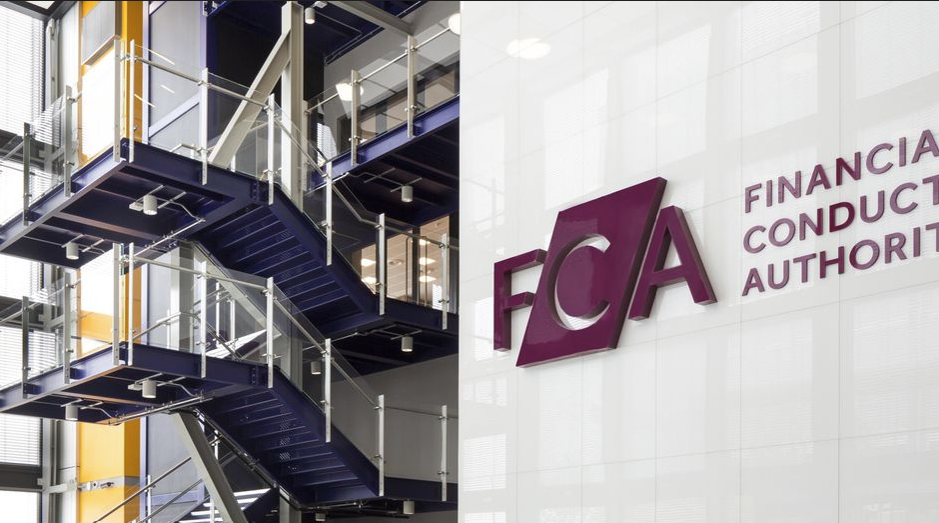[vc_row type=”full_width_background” full_screen_row_position=”middle” scene_position=”center” text_color=”dark” text_align=”left” overlay_strength=”0.3″ shape_divider_position=”bottom” shape_type=””][vc_column column_padding=”no-extra-padding” column_padding_position=”left-right” background_color_opacity=”1″ background_hover_color_opacity=”1″ column_shadow=”none” column_border_radius=”none” top_margin=”0″ width=”1/1″ tablet_text_alignment=”default” phone_text_alignment=”default” column_border_width=”none” column_border_style=”solid”][vc_column_text]Ever since the 1990s, we’ve been sold the many benefits of diversity. We know that having the most diverse mix of people in our organisation makes us able to be more creative, spot opportunities and solve problems – not to mention making us more desirable as employers and boosting our public profile. Time and again, too, the research has shown us that diverse teams perform significantly better.[/vc_column_text][vc_custom_heading text=”From equality and diversity to inclusion” use_theme_fonts=”yes”][vc_column_text]McKinsey’s 2015 report on public companies found that those in the top quartile for ethnic and racial diversity in management were 35% more likely to have financial returns above their industry mean, with those in the top quartile for gender diversity 15% more likely to have returns above the mean. Yet the research also shows us that simply recruiting a more diverse workforce isn’t enough. Studies have found worryingly high levels of women and ethnic minority employees leaving the US tech industry, and other industry research clearly suggests that the good intentions embodied in diversity policies and bias-busting recruitment practices are often failing to translate into lasting change.[/vc_column_text][/vc_column][/vc_row][vc_row type=”in_container” full_screen_row_position=”middle” scene_position=”center” text_color=”dark” text_align=”left” overlay_strength=”0.3″ shape_divider_position=”bottom”][vc_column column_padding=”no-extra-padding” column_padding_position=”left-right” background_color_opacity=”1″ background_hover_color_opacity=”1″ column_shadow=”none” column_border_radius=”none” width=”1/1″ tablet_text_alignment=”default” phone_text_alignment=”default” column_border_width=”none” column_border_style=”solid”][vc_custom_heading text=”Nic Hammarling introduces Inclusive Leadership” font_container=”tag:h2|text_align:left|color:%23444444″ use_theme_fonts=”yes”][vc_video link=”https://vimeo.com/249838315/” align=”center” css=”.vc_custom_1525116210144{margin-top: 30px !important;}”][nectar_btn size=”small” open_new_tab=”true” button_style=”regular” button_color_2=”Accent-Color” icon_family=”none” url=”https://s3.amazonaws.com/skillboosterscatalogue/Transcript_sb_IL_Psychological+standing.pdf” text=”Transcript”][/vc_column][/vc_row][vc_row type=”in_container” full_screen_row_position=”middle” scene_position=”center” text_color=”dark” text_align=”left” overlay_strength=”0.3″ shape_divider_position=”bottom”][vc_column column_padding=”no-extra-padding” column_padding_position=”all” background_color_opacity=”1″ background_hover_color_opacity=”1″ column_shadow=”none” column_border_radius=”none” width=”1/1″ tablet_text_alignment=”default” phone_text_alignment=”default” column_border_width=”none” column_border_style=”solid”][vc_column_text]
“Diversity is being asked to the party. Inclusion is being asked to dance.”
Verna Myers
[/vc_column_text][vc_column_text]These well-known words of diversity advocate Verna Myers sum up the key to unlocking the potential of a diverse workforce and reaping the real rewards of difference. As world-renowned bias expert Professor Binna Kandola, Co-founder and Senior Partner of business psychology consultancy Pearn Kandola explains in Skill Boosters’ new inclusive leadership training, when it comes to unlocking the potential of a diverse workforce, there is a secret ingredient.[/vc_column_text][/vc_column][/vc_row][vc_row type=”in_container” full_screen_row_position=”middle” scene_position=”center” text_color=”dark” text_align=”left” overlay_strength=”0.3″ shape_divider_position=”bottom”][vc_column column_padding=”no-extra-padding” column_padding_position=”all” background_color_opacity=”1″ background_hover_color_opacity=”1″ column_shadow=”none” column_border_radius=”none” width=”1/1″ tablet_text_alignment=”default” phone_text_alignment=”default” column_border_width=”none” column_border_style=”solid”][image_with_animation image_url=”1043″ alignment=”center” animation=”Fade In” border_radius=”none” box_shadow=”none” max_width=”100%”][vc_column_text]
“People often talk about the upsides for diversity – but ignore the research that shows that diversity also creates problems. The most interesting thing for me is what makes the difference between diversity being a good thing, and diversity being a bad thing. And it’s inclusion that’s the secret sauce.”
Binna Kandola
[/vc_column_text][/vc_column][/vc_row][vc_row type=”in_container” full_screen_row_position=”middle” scene_position=”center” text_color=”dark” text_align=”left” overlay_strength=”0.3″ shape_divider_position=”bottom”][vc_column column_padding=”no-extra-padding” column_padding_position=”all” background_color_opacity=”1″ background_hover_color_opacity=”1″ column_shadow=”none” column_border_radius=”none” width=”1/1″ tablet_text_alignment=”default” phone_text_alignment=”default” column_border_width=”none” column_border_style=”solid”][vc_column_text]In a 2015 cognitive intelligence study conducted by MIT researchers found that the most successful teams had three things in common: not only were they more diverse, but they also exhibited higher levels of emotional intelligence and gave each other equal time to talk. Everyone was able to contribute and nothing anyone said was wasted – in other words, they were displaying key features of an inclusive workplace. [/vc_column_text][/vc_column][/vc_row][vc_row type=”full_width_background” full_screen_row_position=”middle” scene_position=”center” text_color=”dark” text_align=”left” overlay_strength=”0.3″ shape_divider_position=”bottom” shape_type=””][vc_column column_padding=”no-extra-padding” column_padding_position=”all” background_color_opacity=”1″ background_hover_color_opacity=”1″ column_shadow=”none” column_border_radius=”none” width=”1/1″ tablet_text_alignment=”default” phone_text_alignment=”default” column_border_width=”none” column_border_style=”solid”][vc_column_text]Dr Nic Hammarling, Head of Diversity at Pearn Kandola sets out what inclusion is really about:[/vc_column_text][vc_column_text]
“Inclusion is making everybody feel that they fit in, that they are part of something bigger and that they can be themselves at work…and an inclusive workforce is one where people can give their opinions openly and be really honest about what they think – and that’s where you get the real benefits around decision-making and problem-solving.”
Dr Nic Hammarling
[/vc_column_text][/vc_column][/vc_row][vc_row type=”full_width_background” full_screen_row_position=”middle” scene_position=”center” text_color=”dark” text_align=”left” top_padding=”30″ overlay_strength=”0.3″ shape_divider_position=”bottom” shape_type=””][vc_column column_padding=”no-extra-padding” column_padding_position=”all” background_color_opacity=”1″ background_hover_color_opacity=”1″ column_shadow=”none” column_border_radius=”none” width=”1/1″ tablet_text_alignment=”default” phone_text_alignment=”default” column_border_width=”none” column_border_style=”solid”][image_with_animation image_url=”7951″ alignment=”center” animation=”Fade In” border_radius=”none” box_shadow=”none” max_width=”100%”][/vc_column][/vc_row][vc_row type=”full_width_background” full_screen_row_position=”middle” scene_position=”center” text_color=”dark” text_align=”left” overlay_strength=”0.3″ shape_divider_position=”bottom” shape_type=””][vc_column column_padding=”no-extra-padding” column_padding_position=”top” background_color_opacity=”1″ background_hover_color_opacity=”1″ column_shadow=”none” column_border_radius=”none” width=”1/1″ tablet_text_alignment=”default” phone_text_alignment=”default” column_border_width=”none” column_border_style=”solid”][vc_custom_heading text=”Inclusive leadership is the key” use_theme_fonts=”yes”][vc_column_text css=”.vc_custom_1537784687073{padding-top: -30px !important;}”]If we think about diversity as being the ‘mix’, then it’s essential to have inclusive leaders who are able to harness the knowledge, skills and insights of this diverse mix and use it to deliver competitive advantage for their organisation. Just as exclusive behaviour can be exhibited by anyone in an organisation, the same holds true for inclusive behaviour – and ensuring that an ethos of inclusion permeates an organisation from top to bottom means having these inclusive leaders at every level, all the way from the executive board down to individual line managers and team leaders.[/vc_column_text][/vc_column][/vc_row][vc_row type=”in_container” full_screen_row_position=”middle” scene_position=”center” text_color=”dark” text_align=”left” overlay_strength=”0.3″ shape_divider_position=”bottom”][vc_column column_padding=”no-extra-padding” column_padding_position=”all” background_color_opacity=”1″ background_hover_color_opacity=”1″ column_shadow=”none” column_border_radius=”none” width=”1/1″ tablet_text_alignment=”default” phone_text_alignment=”default” column_border_width=”none” column_border_style=”solid”][vc_custom_heading text=”Why the business case for inclusion is growing” use_theme_fonts=”yes”][vc_column_text]In a complex, highly connected world that’s changing as fast as we can keep up, the business case for unlocking the benefits of diversity grows ever stronger. Organisations increasingly need to cater to a diversity of markets, and this in turn means being able to come up with new, fresh and innovative approaches. They also need to cater for a greater diversity of customers in a world where an increasingly diverse and discerning customer base expects greater personalisation of products and services, and where consumers are able to make more informed choices, more quickly and with a wider range of channels at their disposal than ever before.
As the nature of consumption and competition changes, so the need grows for a diversity of ideas to keep abreast of developments in areas such as technology and changing consumer behaviour. Lastly, increasing diversity of talent, such as changes in age profiles and education, greater social mobility and shifting migration patterns, together with changing expectations around equal opportunities and work/life balance are all having an impact on working populations today.[/vc_column_text][/vc_column][/vc_row][vc_row type=”in_container” full_screen_row_position=”middle” scene_position=”center” text_color=”dark” text_align=”left” overlay_strength=”0.3″ shape_divider_position=”bottom”][vc_column column_padding=”no-extra-padding” column_padding_position=”all” background_color_opacity=”1″ background_hover_color_opacity=”1″ column_shadow=”none” column_border_radius=”none” width=”1/1″ tablet_text_alignment=”default” phone_text_alignment=”default” column_border_width=”none” column_border_style=”solid”][vc_custom_heading text=”What is inclusive leadership style?” use_theme_fonts=”yes”][vc_column_text]Inclusive leaders demonstrate several key traits, the first of which is being able to build an inclusive culture. Clearly there is little point in hiring a diverse workforce in order to benefit from the different skills, experience and perspectives they bring, only to then make those employees feel that they need to hide these differences in order to ‘fit in’. An inclusive culture enables everyone to be themselves and to share their ideas and opinions, ask questions and even challenge the boss without fear of negative comeback.
Secondly, inclusive leaders appreciate the importance of building good working relationships – be that with the individual members of their team, within the wider organisation or through informal professional networks. Inclusive leaders are mindful of the need to get to know everyone on their team, not just in a professional capacity but also as an individual, and they are proactive not just about building their own networks but also about helping others to build their own, by sharing their contacts and brokering introductions.
The final key tenet of inclusive leadership is the need for flexible thinking and bias-free decision-making. This means being aware of the impact of unconscious bias on the decisions we make and creating an environment where bias can be properly understood and tackled. It’s also about being flexible in our thinking and creative in finding solutions, rather than just relying on tried-and-tested approaches.
A diverse workforce that incorporates a wide range of skills, experience and perspectives is an organisation’s greatest asset – but it’s inclusive leadership that will enable you to truly unlock the potential of this asset and deliver the benefits for your organisation. Find out more about how inclusive leaders can transform your organisation with inclusive leadership training from Skill Boosters. [/vc_column_text][/vc_column][/vc_row][vc_row type=”in_container” full_screen_row_position=”middle” scene_position=”center” text_color=”dark” text_align=”left” overlay_strength=”0.3″ shape_divider_position=”bottom”][vc_column column_padding=”no-extra-padding” column_padding_position=”all” background_color_opacity=”1″ background_hover_color_opacity=”1″ column_shadow=”none” column_border_radius=”none” width=”1/3″ tablet_text_alignment=”default” phone_text_alignment=”default” column_border_width=”none” column_border_style=”solid”][/vc_column][vc_column column_padding=”no-extra-padding” column_padding_position=”all” background_color_opacity=”1″ background_hover_color_opacity=”1″ column_shadow=”none” column_border_radius=”none” width=”1/3″ tablet_text_alignment=”default” phone_text_alignment=”default” column_border_width=”none” column_border_style=”solid”][nectar_btn size=”large” open_new_tab=”true” button_style=”regular” button_color_2=”Accent-Color” icon_family=”none” url=”https://s3.amazonaws.com/skillboosterscatalogue/index.html#/” text=”Go to catalogue”][/vc_column][vc_column column_padding=”no-extra-padding” column_padding_position=”all” background_color_opacity=”1″ background_hover_color_opacity=”1″ column_shadow=”none” column_border_radius=”none” width=”1/3″ tablet_text_alignment=”default” phone_text_alignment=”default” column_border_width=”none” column_border_style=”solid”][/vc_column][/vc_row][vc_row type=”in_container” full_screen_row_position=”middle” scene_position=”center” text_color=”dark” text_align=”left” overlay_strength=”0.3″ shape_divider_position=”bottom”][vc_column column_padding=”no-extra-padding” column_padding_position=”all” background_color_opacity=”1″ background_hover_color_opacity=”1″ column_shadow=”none” column_border_radius=”none” width=”1/1″ tablet_text_alignment=”default” phone_text_alignment=”default” column_border_width=”none” column_border_style=”solid”][vc_custom_heading text=”About Skill Boosters” use_theme_fonts=”yes”][vc_column_text]Used by leading organisations around the globe, Skill Boosters produce video-rich online courses that engage learners to bring about real and lasting behavioural change in the workplace.[/vc_column_text][/vc_column][/vc_row]












